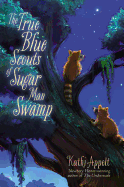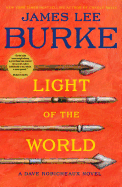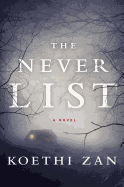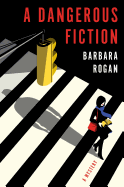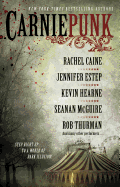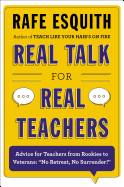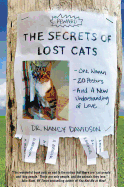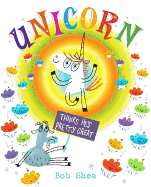Tuesday, July 30, 2013
Even more fall books (part 1, part 2, part 3) we're looking forward to:
Man Alive! by Mary Kay Zuravleff (FSG, September 3). Dr. Owen Lerner's life changes when the coin he's feeding into a parking meter is struck by lightning. He survives, but now all he wants to do is barbecue. What will happen to his patients, his family? Dazzling prose, sentences and phrases you want to underline, if not actually memorize.
Mirages, the Unexpurgated Diaries of Anaïs Nin, 1939-1947, edited by Paul Herron (Swallow, October 15). The story that was cut from all of Nin's other published diaries. She describes this period as "hell"--heartbreak, despair, courage and persistence. You'll find out, among other things, what led to the demise of her affair with Henry Miller.
The Mushroom Hunters: On the Trail of an Underground America by Langdon Cook (Ballantine, September 10). Uncultivated mushrooms are one of our last truly wild food; it often takes truly wild and rough mushroom hunters to bring them to our table. Cook travels and hunts with them in a riveting, crazy undertaking, told in often-poetic prose.
One Summer: America, 1927 by Bill Bryson (Doubleday, October 1). A narrative featuring Charles Lindbergh, Babe Ruth, Herbert Hoover and Al Capone. Bryson can write about anything and make it fascinating, as he digresses from one interesting thing to another.
Quiet Dell by Jayne Anne Phillips (Scribner, October 15). A compelling tale set in 1931 Chicago based on a real multiple murder by a con man who preyed on widows. The disappearance of a woman and her two children is investigated by reporter Emily Thornhill and a city banker who blames himself for not saving the family.
A Reader's Book of Days: True Tales from the Lives and Works of Writers for Every Day of the Year by Tom Nissley (Norton, November 4). Charming, funny, beguiling, this literary miscellany combines true events in writers' lives and fictional events in their books. The perfect gift for any reader.
Byzantium: Stories
by Ben Stroud
Byzantium: the word conjures up exoticism and complexity, something out of the ordinary. The 10 stories in Ben Stroud's debut collection touch on all these areas.
The title story is about a poor young man, Eusebios Lekapenos, who suffers from a withered hand. His deformity leads to the emperor's request that he geld a mysterious holy man he fears is about to overthrow him--and thereby destroy his magical powers. He accepts the task and his life (and hand) changes because of it. Two nifty historical stories deal with a 19th-century black detective, Jackson Hieronymous Burke. His first case is set in Havana, where he solves the mystery of the disappearance of the Don's love, the cinnamon-colored Marcita. Next, he is in Germany, and we are told of his life and successes, his many-roomed house--all the things legends are made of. These three exotic stories make for fun reading.
Stroud's contemporary pieces are no less satisfying. "East Texas Lumber" is a solid, almost-coming-of age piece about working in a lumberyard and failing at work (shingles are heavy) and love. "Eraser" is on the odd side--a young boy envisions his own death and how his parents will react. Stroud can switch hit with ease, going deep with detailed and understated Steven Millhauser pastiches--or just hitting away and moving us with tales of youth, love and the everyday. --Tom Lavoie, former publisher
Discover: Dazzling, inventive takes on the short story mark this Bakeless Prize-winning collection from a very promising young writer.
& Sons
by David Gilbert
David Gilbert's novel & Sons explores the existential tension between literary fame and family legacy for A.N. Dyer, an elderly writer whose double-initial moniker and early success are reminiscent of J.D. Salinger's, but whose seclusion is provided by a doorman-guarded duplex with views of Central Park rather than a house in the New Hampshire woods. Now in poor health, 79-year-old Dyer has mounted a late campaign to connect his semi-estranged adult sons Richard and Jamie with their half-brother Andy, the extramarital progeny whose surprise existence impelled their mother to divorce Dyer 17 years earlier. As the title promises, & Sons is as much about the exploits of this second-and-a-half generation as the preoccupations of its pater.
Several sleights of narrative advance & Sons beyond dysfunctional prepster family realism. Gilbert (The Normals; Remote Feed) filters the story through Philip Topping, the son of A.N.'s recently deceased childhood buddy and a Dyer-son wannabe from way back. Topping's omniscient perspective on the Dyers and their interior lives, permeated with covetousness and bile yet occasionally pathetic, creates a fluctuating schism in the reader's sympathies. Gilbert also embeds clue-filled excerpts from Dyer's megaselling novel Ampersand and scatters a trail of facsimile correspondence and sly literary references. Most daringly, the novel's biggest narrative mischief reveals itself at the halfway point, when a seminal plot point reconfigures & Sons both backward and forward.
Gilbert's & Sons is the kind of book that generates that magic reading tension between impatience to know what happens next and the desire to prolong immersion as long as possible. --Holloway McCandless, blogger at Litagogo: A Guide to Free Literary Podcasts
Discover: David Gilbert (The Normals, Remote Feed) presents a posh-WASP Manhattan novel about literary fame and paternal legacy--with a twist.
The Age of Ice
by J.M. Sidorova
The Age of Ice, an epic debut novel by a research professor in Seattle, is quite the accomplishment. Born in Russia, J.M. Sidorova turns to her homeland's great tradition of "big" fictional stages--think War and Peace, with a little Tom Jonesian road novel mixed in--and a dash of science fiction. Her story spans nearly three centuries across a worldwide stage--Russia, Afghanistan, Paris, India, America, the Arctic--with a list of characters three pages long.
The narrator, Prince Alexander Velitzyn, and his brother Alexi, are conceived in 1740 on a cold bed in a literal ice palace, when the Empress commands a humpbacked woman and a jester to have sex. (The mother will die in childbirth.) Alexander was a "colorless runt," his brother robust. He grows up, joins Catherine the Great's elite guards and gradually becomes aware of his immunity to cold, no matter how severe. And, as time passes, he has to accept the fact that, "half ice, half human," he won't die.
He carries these burdens with him through his many adventures, marriage and friendships. We're captivated as he tells us about meeting Mary Shelley, serving on an expedition in search of the Northwest Passage, fighting Napoleon, spying in Iran and, in 2007, traveling to the Arctic.
Sidorova beautifully convinces us of Alexander's wonderful, stirring quest for who he is--"I am becoming a story"--as it subtly begins to corresponds with climate change and the world's melting ice. --Tom Lavoie, former publisher
Discover: A fascinating, touching novel that spans the world and the centuries, starring a man of ice who cannot die.
Mystery & Thriller
Light of the World
by James Lee Burke
Light of the World, James Lee Burke's 20th novel starring Louisiana detective Dave Robicheaux, returns to the Montana hill setting of 2008's Swan Peak. Fans will be thrilled to find Robicheaux and Clete Purcel joined by their respective adult daughters in a hard-hitting, intense battle between good and evil. Burke's writing is poetic--reverential in praise of natural beauty, contemplative of human nature--and invokes a strong sense of place. Clete, the rough-and-ready, hard-drinking, softhearted private investigator, is lovable as ever; Robicheaux is the flawed hero who has charmed us from the first, fighting his demons and protecting his clan.
Years ago, Dave's daughter, Alafair, visited serial killer Asa Surette in prison to interview him for a book she never wrote. Instead, she published a condemning series of articles advocating the death penalty. Later, Surette was killed in a collision with a gasoline tanker. So why is he now lurking around the cabins in Big Sky Country where Robicheaux, Clete and their families are trying to relax? The evil in this powerful story of suspense has supernatural undertones, as wolves skulk in the woods above the ranch and planes fall out of the sky. Alafair teams up with Clete's daughter, the reforming New Orleans hitwoman Gretchen Horowitz, and they make as remarkable a pair as their fathers. As the story unfolds, a rodeo cowboy who speaks in tongues, a serial killer who should be dead, ex-cons, rapists, bear traps and evil that dwells in caves in the hills all come together in perhaps the greatest showdown of Burke's career. --Julia Jenkins, librarian and blogger at pagesofjulia
Discover: Dave Robicheaux and Clete Purcel are joined by their daughters as they battle evil in the hills and valleys of Montana.
The Never List
by Koethi Zan
The title of Koethi Zan's The Never List refers to a list that Sarah and her best friend, Jennifer, who survived a car crash at an early age, kept of things they should always avoid doing. The young girls became vigilant about their safety, obsessing over the statistics about being injured or killed in different ways.
Numbers couldn't save them from being kidnapped and imprisoned in a sadist's basement for years with two other women, though. Sarah eventually helped organize an escape, but Jennifer never made it out and her body was never found. Zan starts her story 10 years later, when their tormentor is up for parole. Sarah, now agoraphobic, is determined to keep him locked up and to reclaim her own life by confronting her fears and finding out what happened to Jennifer.
The novel's eerily prescient echoes of the Ariel Castro case add to the gut-wrenching effect of the victims' ordeal. Thankfully, Zan doesn't focus on the torture, but more on the women's spirit, survival instincts and different methods of coping after reentering society.
The novel's weakest aspect is its dialogue. Characters address each other by name too much in conversation and talk in long monologues to reveal all their secrets as the story progresses. But Zan's pacing is tight and her plot both horrific and compassionate toward the women. The Never List might warrant a place on readers' summer reading lists. --Elyse Dinh-McCrilllis, freelance writer and editor, blogging at Pop Culture Nerd
Discover: An eerily timely story about unspeakable violence done to a group of women focuses on the victims' strength and how they fight back.
A Dangerous Fiction
by Barbara Rogan
Jo Donovan, widow of a famous author and now a successful literary agent, is living her dream in New York City, far from her hardscrabble Appalachian childhood. But when an overeager client styling himself "Sam Spade" begins stalking Jo and a dozen of her clients fall victim to a hacker's scam, her meticulously ordered life starts to crumble. After a friend and client is murdered, Jo finally goes to the police--where the officer assigned to her case is her former love, Tommy Cullen.
Barbara Rogan (Hindsight; Suspicion) provides a fascinating glimpse into the New York publishing world, though readers interested in the industry may wish for more details. A cast of likable supporting characters rallies to support Jo, though Rogan keeps readers guessing by giving several of them motive for murder. (Jo gets her best advice from Max, a six-foot FBI profiler turned thriller writer, and her best protection from Mingus, a retired SWAT team German shepherd that becomes her bodyguard.)
Gradually, Rogan reveals details of Jo's past, highlighting the disparity between her polished public image and the harsher, messier reality. As the killer closes in, Jo must confront not only her stalker and his obsession, but the complicated truth of her own quest for security and love--and the people she may have hurt in the process.
Fast-paced and witty, full of deftly drawn characters, Rogan's literary mystery introduces a tough but compassionate heroine and an entertaining new series. --Katie Noah Gibson, blogger at Cakes, Tea and Dreams
Discover: The first mystery in a new series set in New York's publishing world, featuring tough, compassionate literary agent Jo Donovan.
Science Fiction & Fantasy
Carniepunk
by Jennifer Estep, Kelly Gay, Rachel Caine, Kevin Hearne et al.
A star-studded roster of urban fantasy authors is the main attraction in Carniepunk, a collection of short stories set against the eerie and often horrifying backdrop of a slew of paranormal carnivals.
In "Painted Love" by Rob Thurman, a mystical drifter tags along with a sociopath in order to catch the lesser-known thrills of a traveling carnival but finds himself driven by love to break his code of not getting involved with the humans he observes. Rachel Caine delivers a sad and chilling tale of violence in "Cold Girl," in which a teenaged girl falls victim to depraved betrayal by her first love and must decide whether to take revenge at great cost to her soul. And in "A Duet with Darkness" by Allison Pang, an arrogant young fiddler discovers her music has the power not only to attract the Other Folk, but the ultimate evil as well. Of course, no carnival-themed anthology would be complete without at least one vaguely creepy clown, such as the one in Jennifer Estep's "Parlor Tricks," which finds Gin Blanco, aka the Spider, searching for the connection between a missing girl and an Air Elemental who stars in a knife-throwing act.
Fans of horror and dark fantasy will savor this combination of exotic and macabre from their favorite writers, but anyone who has ever felt that their reflection in the funhouse mirror kept watching them after they turned around will find this collection creepy yet satisfying. --Jaclyn Fulwood, youth services manager at Latah County Library District and blogger at Infinite Reads
Discover: A collection of dark fantasy stories set in a variety of paranormal carnivals, written by more than a dozen leading contemporary urban fantasy writers.
Current Events & Issues
Real Talk for Real Teachers: Advice for Teachers from Rookies to Veterans: "No Retreat, No Surrender!"
by Rafe Esquith
While Real Talk for Real Teachers would be a great gift for inexperienced teachers, Rafe Esquith's wisdom gained from 25 years teaching Los Angeles fifth graders will be just as beneficial for veteran educators: Esquith clearly understands the challenges that teachers in the first, middle and last years of their career must overcome. He begins by inspiring brand-new teachers, moves on to the challenges that emerge after surviving a few school years ("fodder for dedicated teachers who need answers to questions that time did not permit to be asked during the early years of struggle") and concludes with advice for "master teachers."
In his advice for newbies, Esquith covers topics like classroom management, standardized testing and jealous colleagues. However, his optimism and practical suggestions will be especially inspirational to seasoned veterans--and can serve as a reminder of why they entered the classroom in the first place. Even the most inspired, most talented teachers have bad days, he reminds us, and explains how to recover quickly. He then walks through guidelines to create a "working classroom" where Day One is just as productive as Day 1,001.
Real Talk for Real Teachers avoids lofty platitudes and "chicken soup" nuggets of wisdom. Instead, Esquith's examples are grounded in the complex reality of teaching in the 21st century. He motivates by demonstrating that concrete challenges can be overcome day by day and inspires teachers at every level to engage even the most disconnected students. --Kristen Galles, blogger at Book Club Classics
Discover: As any teacher knows, effective teaching is both a science and an art; Esquith addresses both with motivational advice.
Science
A Very Short Tour of the Mind: 21 Short Walks Around the Human Brain
by Michael Corballis
A Very Short Tour of the Mind is a breezy but intellectually stimulating jaunt through the labyrinthine ways of the mind-brain connection. Michael Corballis tackles an amazing array of subjects in a collection of essays originally published in New Zealand Geographic, including neuroscience, evolutionary theory, left versus right brain thinking and the old adage "we only use 10% of our brain" (a claim that arouses his skepticism).
Amazingly enough, within just a few pages, each essay is able to present theories and counter-theories, as well as Corballis's own elegantly stated opinions. He is particularly adept at discussions involving the theories of language formation. His take on how our spoken language evolved from an elaborate sign language seems to be a gem of evolutionary design--it's a heck of a lot easier to throw spears when your hands aren't busy signing where your prey is. Other standout essays revolve around facial recognition, the relationship between brain size and intelligence levels (which is not always consistent) and the social implications of swearing and other decreasingly taboo activities.
Admittedly, some of Corballis mini-essays tend to drift and they don't fully cohere as a collection. Still, A Very Short Tour of the Mind is never less than engaging. Simultaneously breezy and intellectually stimulating, these short walks are well worth taking. --Donald Powell, freelance writer
Discover: An Auckland psychology professor and science journalist presents a series of brilliant short tours of mind/brain theories.
Pets
The Secrets of Lost Cats: One Woman, 20 Posters and a New Understanding of Love
by Nancy Davidson
When therapist Nancy Davidson's beloved cat, Zak, went missing, she placed posters in her neighborhood; after many anxiety-filled days, cat and owner were happily reunited. During her search, however, Davidson developed an acute awareness of other lost cat posters, which seemed to be everywhere. Then, as she recounts in The Secrets of Lost Cats, she began more than seven years of research into the stories connected to these cries for help.
If a poster contained emotional phrases or descriptions such as "afraid of loud noises," she learned, the cat's owner was probably female. Male cat owners tended to fill their posters with declarative statements: Missing! Reward! Call! Furthermore, "in my role as cat sleuth," she writes, "I was learning that when you talk to people about their animals, they'll often reveal personal and profound statements about their life." Davidson was fascinated by the stories of the owners; she writes with sensitivity and respect about the roles cats and their human companions play with each other and the extent to which a person would go to get their beloved feline back--including breaking and entering and hiring psychics and pet detectives.
Some cats were found, others returned on their own--and some never came back, leaving owners depressed and guilty. But the overall feelings Davidson sensed were ones of love and compassion, and these threads run strong throughout The Secrets of Lost Cats. --Lee E. Cart, freelance writer and book reviewer
Discover: A therapist goes behind the scenes to discover the stories of missing felines and their human friends.
Children's & Young Adult
The True Blue Scouts of Sugar Man Swamp
by Kathi Appelt, illus. by Jennifer Bricking
As with her Newbery Honor book The Underneath, Kathi Appelt sets this captivating web of interconnected stories in the ancient forests of piney trees and integrates the alluring lore of the bayou. But she adopts a lighter voice, just right for a storyteller with a Southern drawl to read aloud.
Deep in the Sugar Man Swamp, raccoons Bingo and J'miah serve as Information Officers from the safety of a 1949 DeSoto. Whenever lightning strikes nearby, it triggers "the Voice of Intelligence" (children will quickly realize it's a radio) that often gives them orders. Chap, the 12-year-old grandson of Audie Brayburn, makes it his mission to find his grandfather's DeSoto and complete his quest of locating the Ivory-billed Woodpecker. Ever since Audie's recent death, Sonny Boy Beaucoup, "the official owner" of the swamp, has threatened to run Chap and his mother out of their Paradise Pies Café, so that he can set up a theme park. The local radio announcer's daily sign-off bids "all you swamp critters to have a good day and a good idea," and each character gets at least one.
Appelt weaves the rich language of legends passed down through generations. The Ivory-billed Woodpecker is as mythical as the Sugar Man. She carries weighty themes lightly, and spins a story that reminds us that kin extends beyond the prescribed family tree. By the end of the story, we understand that that includes "all the swamp critter." As Audie told Chap, they are paisanos, fellow countrymen. They come from the same soil. --Jennifer M. Brown, children's editor, Shelf Awareness
Discover: Newbery Honor author Appelt's return to the bayou setting of The Underneath, with a lighter touch and an environmental theme.
Unicorn Thinks He's Pretty Great
by Bob Shea, illus. by Bob Shea
A glitter-dispensing unicorn causes the goat's expression of consternation on the sparkly cover of Bob Shea's latest humorous picture book.
The title page, too, emphasizes the goat's emotions, which children will quickly recognize as envy: the goat (whose mood is as blue as his hair) stands in the rain while a pocket of sunlight emanates from the unicorn. Thinking he's "pretty cool" as the goat rides his bike to school, he's shown up by "show-off" Unicorn, who literally flies above him. The goat makes marshmallow squares for his friends, while Unicorn causes it to rain cupcakes. Unicorn tops the goat's dance moves with some "serious prancing" that takes first prize. The goat takes out his frustrations by aping the unicorn. He places a plunger on his forehead and, in a series of vignettes, hops on one leg and sticks out his tongue, chanting, "Look at me! I'm Unicorn! I think I'm so-o-o cool!"
But while the unicorn must count on magic to manufacture his greatness, the goat's natural gifts attract the unicorn. The goat can make cheese--the key ingredient to a "fan-tas-tic" pizza that wows the unicorn ("I can only eat glitter and rainbows," confesses Unicorn). The goat finds himself in the unlikely position of buoying the unicorn's spirits. And in the end, it's the goat who hatches a plan to put both of their talents to good use. A universal tale of envy turned to admiration and, ultimately, friendship. --Jennifer M. Brown, children's editor, Shelf Awareness
Discover: A blue goat, repeatedly one-upped by a magical unicorn, who comes to appreciate his own natural gifts.




